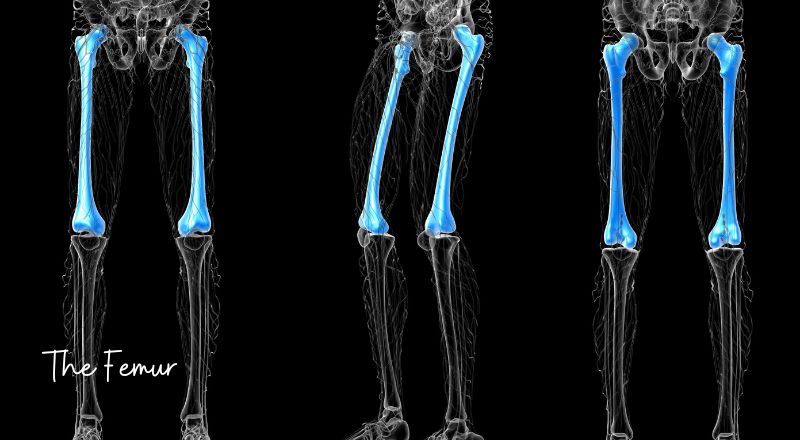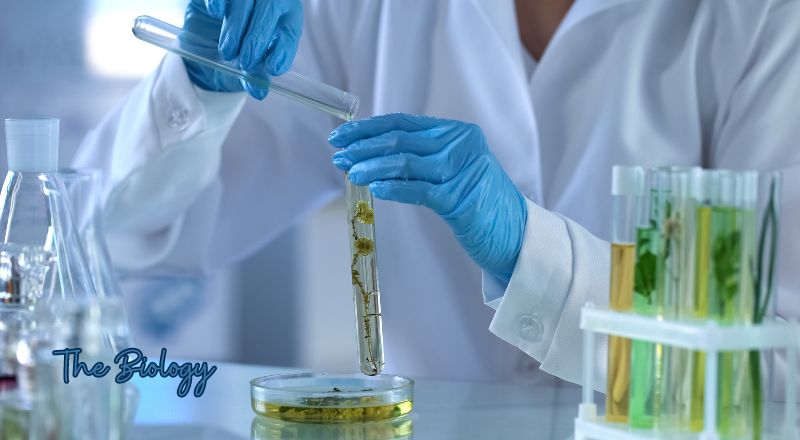General knowledge encompass a broad array of subjects, each intertwining to shape our understanding of the natural world and our place within it. At its core, science is the pursuit of knowledge and understanding of the natural and social world following a systematic methodology based on evidence.
Human General Knowledge Overview
Studies life and living organisms.
Explores matter, energy, and fundamental forces of nature.
Investigates substances and reactions of matter.
Study of Earth’s composition, structure, processes, and history.
Refers to information widely known or necessary for well-informed citizens.
This can include history, significant geopolitical events, cultural practices, basic economics, and an understanding of societal structures and functions.
The intertwining of science with human general knowledge is evident in how scientific advancements have shaped societies and human life. For instance, medical science has drastically improved life expectancy and quality of life through the development of vaccines, antibiotics, and other treatments. Technological advancements, underpinned by physics and engineering, have transformed communication, transportation, and the way we interact with our environment. Understanding the basics of ecology and environmental science is becoming increasingly important as humanity faces challenges like climate change, pollution, and biodiversity loss, requiring informed decisions and policies to mitigate these issues.
Moreover, an informed citizenry, aware of basic scientific principles and human general knowledge. Is crucial for the functioning of democratic societies. It enables individuals to critically evaluate information, make informed decisions, participate in discussions and debates on public policy issues, and contribute to the betterment of society. In a world where misinformation can spread rapidly, a solid foundation in science and general knowledge acts as a safeguard. Empowering individuals to discern facts from fiction and make contributions that benefit humanity and the planet
- What is the name of the largest bone in the human body?
- The Force that causes objects to fall to the ground is called?
- What is the name of the gas that humans breathe out and plants breathe in?
- What is the name of the process by which plants make their food?
- What is the name of the smallest unit of life that can replicate itself?
- What is the name of the Instrument that measures atmospheric pressure?
- What substance lacks its shape but can flow and adapt to the shape of its container?
- What device is responsible for transforming sound waves into electrical signals?
- What is the name of the branch of science that studies living organisms and their interactions with each other and the environment?
- What is the name of the state of matter that has a fixed shape and volume?
- What is the name of the part of the eye that controls how much light enters it?
- What is the organ responsible for circulating blood throughout the body called?
- What is the name of the star that is closest to Earth?
- What force is responsible for resisting the motion between two surfaces in contact?
- What is the name of the device that uses lenses to make small objects appear larger?
What is the name of the largest bone in the human body?
The femur, also known as the thigh bone, holds the title of the longest and strongest bone in the human body. It is vital in supporting the body’s weight and enabling movement. Located in the upper leg, the femur connects the hip joint to the knee joint. Its length and sturdy structure enable humans to stand upright, walk, run, and perform various physical activities.

The femur is a remarkable feat of engineering. It is a long, cylindrical bone with a slightly curved shape, providing stability and flexibility. The upper end of the femur, known as the proximal epiphysis, forms the ball-and-socket joint of the hip. The rounded head of the femur fits into the hip socket, allowing for a wide range of motion.
Moving down the femur, the shaft, or diaphysis, is the longest part of the bone. It is thick and hollow, providing strength while maintaining a lightweight structure. Ridges and lines, which serve as attachment points for muscles and ligaments reinforce the shaft.
The distal end of the femur, known as the distal epiphysis, forms the knee joint. It consists of two large condyles, or rounded surfaces, that articulate with the tibia, or shinbone. A groove called the intercondylar fossa, which accommodates the patella, or kneecap separated these condyles.
The femur’s size and strength make it susceptible to various injuries, including fractures, dislocations, and stress fractures. These injuries can be particularly challenging to treat because of the bone’s weight-bearing function.
In conclusion, the femur is not just the largest bone in the human body; it is a vital component that enables mobility and supports the entire skeletal system. Understanding its structure and function is essential for appreciating the incredible complexity and resilience of the human body.
The Force that causes objects to fall to the ground is called?
Answer: Gravity

Gravity is an essential force in nature that causes all objects with mass or energy to attract one another. It is responsible for holding the Earth and other planets in orbit around the Sun, and for keeping the moon in orbit around the Earth. Gravity is also responsible for the tides on Earth and for the formation of stars and galaxies.
The gravitational force exerted between two objects depends on their respective masses and the distance between them. The larger an object’s mass, the stronger its gravitational attraction. The closer two objects are to each other, the stronger the gravitational pull between them.
Gravity is a universal force, meaning that it acts on all objects in the universe, regardless of their size or composition. It represents one of the four fundamental forces of nature. Which include electromagnetism, the strong nuclear force, and the weak nuclear force.
Gravity is a fascinating and mysterious force that scientists for centuries has studied. It is still not fully understood, but it is one of the most important forces in our universe.
What is the name of the gas that humans breathe out and plants breathe in?
Answer: Carbon dioxide
The gas that humans breathe out and plants breathe in is carbon dioxide (CO2).

This gas plays a crucial role in the Earth’s carbon cycle, especially in the process of photosynthesis. During photosynthesis, plants absorb carbon dioxide from the atmosphere and, using sunlight as an energy source, convert it into glucose and oxygen. The oxygen is then released back into the atmosphere, where it becomes available for humans and other animals to breathe. This beautiful exchange between plants and animals helps maintain the balance of gases in our atmosphere, underlining the interdependence of life on Earth.
What is the name of the process by which plants make their food?
Answer: Photosynthesis

Photosynthesis is the remarkable process through which plants manufacture their sustenance.. Remarkable natural phenomenon enables plants to convert light energy, typically from the sun. Into chemical energy that can be used to fuel their growth and development. In the process of photosynthesis, plants take in carbon dioxide (CO2) from the atmosphere and water (H2O) from the ground. Using the energy from light, they transform these ingredients into glucose. A type of sugar that serves as vital nourishment for the plant, and oxygen (O2), which is released as a byproduct.
Photosynthesis is essential not only for plants but also for all life on Earth. It is the foundational step in the food chain, providing the primary energy source for all organisms, directly or indirectly. Furthermore, the oxygen released during photosynthesis is crucial for the survival of most living creatures, including humans, as it constitutes a significant portion of the air we breathe.
The entire process is facilitated by chlorophyll, the green pigment present in plant leaves and other green parts. Chlorophyll efficiently absorbs light in the blue and red parts of the spectrum, making it appear green to us. Through this intricate and efficient process, plants play a critical role in sustaining life on our planet. Making photosynthesis one of the most important biological processes known.
What is the name of the smallest unit of life that can replicate itself?
Answer: A Cell
The smallest unit of life that can replicate itself is called a cell.

Cells are the basic building blocks of all living organisms, from the tiniest bacteria to the largest whales and the most complex human beings. Each cell is an amazing world in itself, capable of performing life-sustaining functions, including replication. Cells contain all the necessary information and machinery to duplicate themselves through a process known as cell division. In cell division, a cell duplicates its DNA and divides into two new cells, each containing a complete set of genetic instructions necessary for life. This ability to replicate is a fundamental characteristic of life, making the cell the smallest unit of life capable of reproduction.
What is the name of the Instrument that measures atmospheric pressure?
Answer: A Barometer
The instrument used to measure atmospheric pressure is called a barometer.

Developed in the 17th century, the barometer has been a vital tool in meteorological science and navigational practices. Its primary function is to provide a direct reading of the air pressure, which is crucial for weather forecasting and for understanding changes in weather patterns. There are several types of barometers, including the mercury barometer, which uses mercury in a glass tube; the aneroid barometer, which uses a small, flexible metal box known as an aneroid cell; and digital barometers, which provides digital readings of the atmospheric pressure. By monitoring variations in atmospheric pressure, meteorologists can predict short-term changes in the weather, such as approaching storms or fair weather.
What substance lacks its shape but can flow and adapt to the shape of its container?
Answer: A Liquid

A substance that lacks its shape but can flow and adapt to the shape of its container is a liquid. This characteristic is one of the fundamental properties that define the liquid state of matter, distinguishing it from solids and gases. Liquids are formless and fluid, meaning they don’t have a fixed shape but rather take on the shape of the container in which they are placed. This ability to flow and change shape makes liquids versatile and unique in the world of matter.
Liquids exhibit this behavior due to the nature of the forces acting between their molecules. Unlike solids, where the molecules are tightly packed in a fixed arrangement. The molecules in a liquid are close together but not in a fixed position. This allows them to move around and slide past each other, which is why liquids can flow. However, the molecules are still attracted to each other. Which is why liquids don’t expand to fill the entire space of their container like gases do.
This characteristic of liquids has numerous applications in daily life and various industries. From the water we drink. Which adapts to the shape of our cups, to the oil that flows in engines, adapting to the shape of its container, liquids play a crucial role in many processes. Understanding the properties of liquids, including their ability to take the shape of their containers, is essential in fields ranging from chemistry and engineering to culinary arts and beyond.
What device is responsible for transforming sound waves into electrical signals?
Answer: A Microphone

The device responsible for transforming sound waves into electrical signals is called a microphone. At its core, a microphone is a transducer, a device that converts one form of energy into another. With a microphone, it converts acoustic energy, or sound waves, into electrical signals that can be amplified, recorded, or transmitted.
Microphones work by employing a diaphragm, a thin piece of material that moves in response to sound waves. When sound waves hit the diaphragm, it vibrates. These vibrations are then converted into electrical signals. The specific mechanism by which this Conversion happens can vary depending on the type of microphone. For example, dynamic microphones use a coil of wire attached to the diaphragm that moves within a magnetic field, generating an electrical current. On the other hand, condenser microphones use a capacitor with a plate attached to the diaphragm that moves relative to a fixed back plate, altering the capacitance and thus generating a signal.
The electrical signals produced by microphones can be very weak and often require amplification to be useful. Once amplified, these signals can be used in a variety of applications. From recording music in a studio to transmitting voices over telephone lines. Microphones have become an indispensable tool in modern communication, entertainment, and many fields of science and technology.
What is the name of the branch of science that studies living organisms and their interactions with each other and the environment?
Answer: Biology

The branch of science that focuses on living organisms, their life processes, and their interactions with each other and the environment is known as Biology. Biology is a vast field that encompasses various sub-disciplines, each dedicated to exploring specific aspects of life. From the microscopic level, examining the molecular and cellular processes that constitute the building blocks of life. To the macroscopic level, studying complex ecosystems and the diversity of life, biology covers it all. This discipline helps us understand the fundamental mechanisms that govern life.
The evolutionary connections among organisms, and the impact of environmental factors on living beings. Through the study of biology, researchers aim to answer fundamental questions. About growth, reproduction, metabolism, survival, and evolution, thereby contributing to advancements in medicine, environmental conservation, agriculture, and various other fields that influence human life and the planet.
What is the name of the state of matter that has a fixed shape and volume?
Answer: A Solid
 A solid is a fundamental state of matter known for its unchanging shape and volume. In solids, the atoms or molecules are closely packed together in a fixed arrangement. Allowing them to maintain a definite shape and volume. This is in contrast to liquids, which possess a fixed volume but not a fixed shape, and gases, which lack both a fixed volume and shape. The fixed, closely packed arrangement of particles in solids also contributes to their other characteristics. Such as incompressibility and resistance to flow, which are not seen in the other states of matter.
A solid is a fundamental state of matter known for its unchanging shape and volume. In solids, the atoms or molecules are closely packed together in a fixed arrangement. Allowing them to maintain a definite shape and volume. This is in contrast to liquids, which possess a fixed volume but not a fixed shape, and gases, which lack both a fixed volume and shape. The fixed, closely packed arrangement of particles in solids also contributes to their other characteristics. Such as incompressibility and resistance to flow, which are not seen in the other states of matter.
What is the name of the part of the eye that controls how much light enters it?
Answer: The Iris

The part of the eye that controls how much light enters it is called the iris. The iris, a thin circular structure in the eye, regulates the diameter and size of the pupil, controlling the amount of light that reaches the retina. The color of a person’s eyes is determined by the amount of melanin present in their iris. The iris operates much like the aperture of a camera, widening or narrowing to adjust the amount of light passing through the pupil. This adjustment allows the eye to quickly adapt to varying light conditions, protecting the retina and enhancing visual acuity.
What is the organ responsible for circulating blood throughout the body called?
Answer: The Heart

The organ responsible for pumping blood throughout the body is the heart. This vital organ is central to the circulatory system, working tirelessly to ensure that oxygenated blood reaches every part of the body while also helping to remove waste products like carbon dioxide. The heart is a muscular organ, roughly the size of a fist, located slightly to the left of the chest’s center. It operates through a complex sequence of electrical and mechanical events, dividing its function between the right and left sides to handle deoxygenated and oxygenated blood, respectively. Through a rhythmic pattern known as the cardiac cycle, the heart contracts (systole) to push blood out into the vessels and relaxes (diastole) to fill with blood, maintaining a steady flow that sustains life.
What is the name of the star that is closest to Earth?
Answer: The Sun

The star closest to Earth, apart from our own Sun, is Proxima Centauri. This red dwarf star lies in the constellation of Centaurus and is part of a triple star system known as Alpha Centauri. Despite its proximity, Proxima Centauri is not visible to the naked eye from Earth because of its relatively low brightness. It is located approximately 4.24 light-years away from our solar system. This proximity, in cosmic terms, makes it a prime target for study and exploration in the quest to understand our galactic neighborhood and the possibility of exoplanets that might orbit it, potentially with conditions suitable for life.
What force is responsible for resisting the motion between two surfaces in contact?
Answer: The Friction

Friction is the force that resists the motion between two surfaces in contact.. Friction arises because of the interactions at the microscopic level between the surfaces in contact. It acts in the opposite direction to the motion (or attempted motion) of an object over another. Essentially, friction is a resistive force that can both be beneficial and a hindrance depending on the situation.
For example, friction between our shoes and the ground allows us to walk or run without slipping. Similarly, it enables cars to move on roads without skidding. On the other hand, friction can be a nuisance in scenarios where we want to minimize resistance, such as in the moving parts of machines, where it can lead to wear and tear, necessitating the use of lubricants to reduce the frictional force.
Friction is categorized into several types, including static friction (which acts on an object at rest, preventing it from starting to move), kinetic (or dynamic) friction (which acts on an object that is moving), and rolling friction (which occurs when an object rolls over a surface). The magnitude of the frictional force can depend on a variety of factors, including the nature of the surfaces in contact and the force pressing the surfaces together.
What is the name of the device that uses lenses to make small objects appear larger?
Answer: Microscope

The device you’re referring to is called a microscope. Microscopes are essential tools in biology, medicine, and materials science, among other fields, allowing users to observe details at the cellular or molecular level that are invisible to the naked eye. The basic principle behind a microscope is the use of lenses to magnify an image, enhancing the viewer’s ability to see small details.
The most common type of microscope is the optical microscope. Which uses visible light and a system of lenses to magnify images of small samples. There are also electron microscopes, which use beams of electrons instead of light for magnification. Offering much higher resolution and allowing for the observation of much smaller structures.
Microscopes have been instrumental in numerous scientific discoveries and continue to be a fundamental tool in both research and educational settings. Their ability to make the invisible world visible has vastly expanded our understanding of the natural world, from the structure of cells and microorganisms to the composition of materials and surfaces at the microscopic level.
Visit and support our page: Discoveries: The Amazing Invents on Society and Culture
